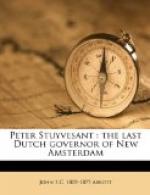The vagabond white men, who were lingering about the frontiers of civilization, inflicting innumerable and nameless outrages upon the natives, were rigorously excluded from these regions. Thus the relations existing between the Indians and their European visitors were friendly in the highest degree. Both parties were alike benefited by this traffic; the Indian certainly not less than the European, for he was receiving into his lowly wigwam the products of the highest civilization.
Indian tribes scattered far and wide through the primitive and illimitable forest, plied all their energies with new diligence, in taking game. They climbed the loftiest mountains and penetrated the most distant streams with their snares. Some came trudging to the forts on foot, with large packs of peltries upon their backs. Others came in their birch canoes, loaded to the gunwales, having set their traps along leagues of the river’s coast and of distant streams.
Once a year the ships of the company came laden with the most useful articles for traffic with the Indians, and, in return, transported back to Europe the furs which had been collected. Such were the blessings which peace and friendship conferred upon all. There seemed to be no temptation to outrage. The intelligent Hollanders were well aware that it was for their interest to secure the confidence of the Indian by treating him justly. And the Indian was not at all disposed to incur the resentment of strangers from whom he was receiving such great benefits.
The little yacht “Restless,” of which we have spoken, on one of her exploring tours, visited Delaware Bay, and ascended that beautiful sheet of water as far as the Schuylkill River. Runners were also sent back from the forts, to follow the narrow trails far into the woods, to open communication with new tribes, to examine the country, and to obtain a more intimate acquaintance with the manners and customs of the Indians.
In the spring of 1617 a very high freshet, accompanied by the breaking up of the ice, so injured Fort Nassau that the traders were compelled to abandon it. A new and very advantageous situation was selected, at the mouth of the Tawasentha Creek, subsequently called Norman’s Kill. This name is said to have been derived from a native of Denmark, called the Norman, who settled there in 1630.
In this vicinity there was a very celebrated confederation of Indian tribes called the Five Nations. These tribes were the Mohawks, Oneidas, Onondagas, Cayugas and Senecas. They were frequently known by the generic name of the Iroquois. When the Dutch arrived, the Iroquois were at war with the Canadian Indians, who, though composed of different tribes, were known by the general name of the Algonquins. The Iroquois had been worsted in several conflicts. This led them eagerly to seek alliance with the white men, who, with their wonderful instruments of war, seemed to wield the energies of thunder and lightning.




